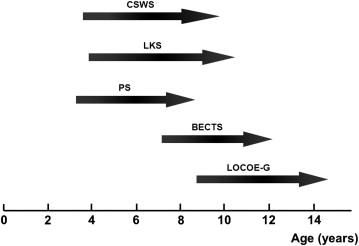Electrical Status Epilepticus in Sleep: Clinical Presentation and Pathophysiology |
| |
| Affiliation: | 1. Division of Epilepsy and Clinical Neurophysiology, Department of Neurology, Boston Children''s Hospital, Harvard Medical School, Boston, Massachusetts;2. Department of Child Neurology, Hospital Sant Joan de Déu, Universidad de Barcelona, Barcelona, Spain;3. Center for Pediatric Sleep Disorders, Division of Epilepsy and Clinical Neurophysiology, Department of Neurology, Boston Children''s Hospital, Harvard Medical School, Boston, Massachusetts |
| |
| Abstract: | 
Electrical status epilepticus in sleep involves an electroencephalographic pattern where interictal epileptiform activity is potentiated in the transition from wakefulness to sleep. Near-continuous spikes and waves that occupy a significant proportion of nonrapid eye movement sleep appear as a result of sleep-potentiated epileptiform activity. This electroencephalographic pattern appears in different electroclinical syndromes that present three common characteristics with different degrees of severity: seizures, sleep-potentiated epileptiform activity, and neuropsychologic regression. Continuous spikes and waves during sleep comprise the severest epileptic encephalopathy in the electroclinical spectrum. Landau-Kleffner syndrome presents with intermediate severity. Some “benign” pediatric focal epileptic syndromes represent the mildest end of this continuum. Based on published data, we provide a framework for clinical and electrical events. The underlying mechanisms leading to sleep potentiation of epileptiform activity in electrical status epilepticus in sleep are incompletely understood. A genetic basis or acquired early developmental insult may disrupt the normal maturation of neuronal networks. These factors may dynamically alter normal processes of brain development, leading to an age-related pattern of electroclinical expression of electrical status epilepticus in sleep. |
| |
| Keywords: | |
| 本文献已被 ScienceDirect 等数据库收录! |
|

